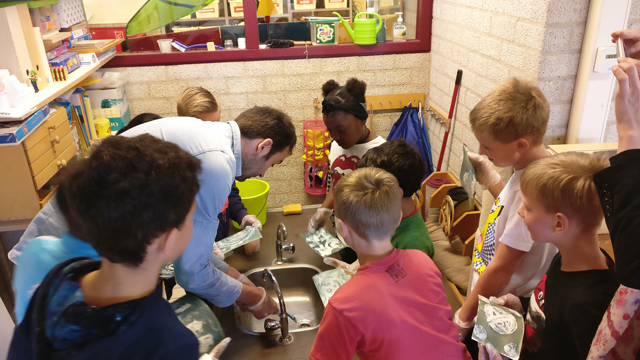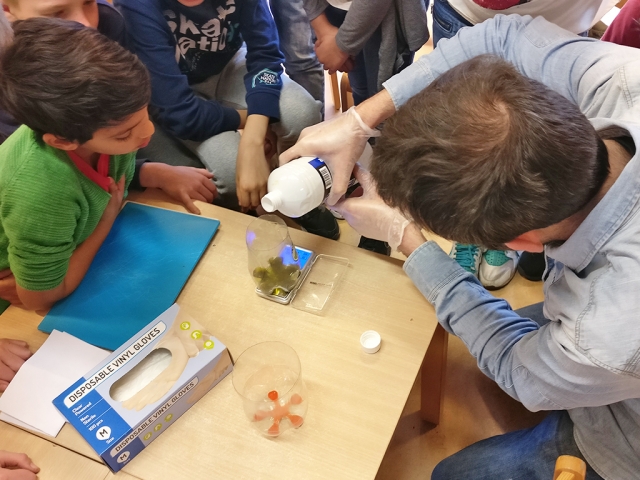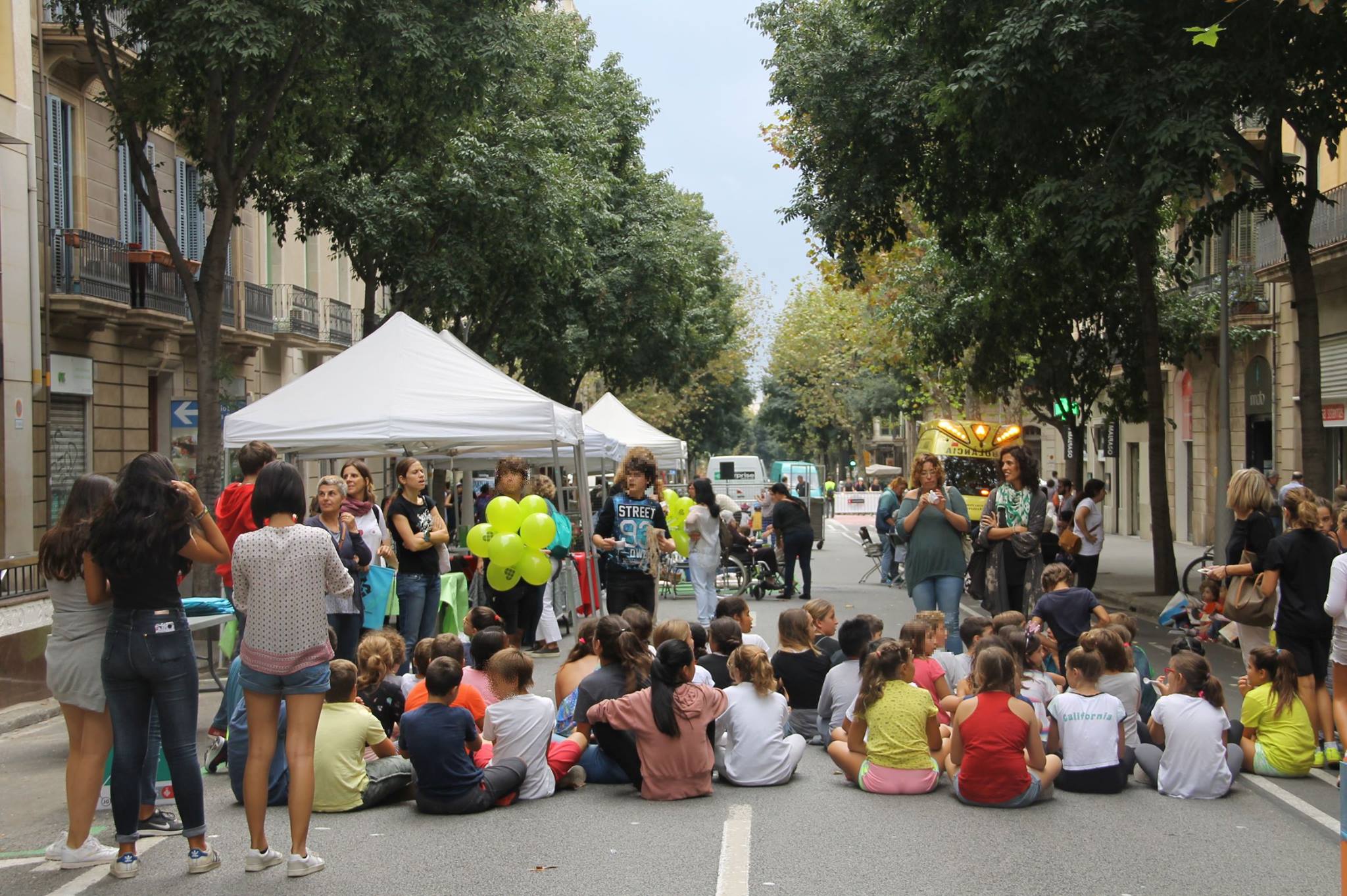Creative watercolor art with sunscreen factor 50
03 April 2017
Lodewijk Loos works at Waag Society. Last week he visited one of the pilot schools in Amsterdam to demonstrate some Smart Kids Lab tests. He wrote down his experiences in this blog.
Last week I visited the school de Regenboog (‘The Rainbow’) in Amsterdam (Gein). It was a sunny afternoon.
That was lucky, because we were going to measure UV light by making light-sensitive blueprint paper. And the fact that light contains severals colours was of course evident to children of the Rainbow school…

Making blueprint paper is not so hard to do, but you have to be very precise. You better wear gloves when conducting this experiment and with a classroom of kids that is a guarantee for a lot of fun. The necessary chemicals were weighed with the help of the class. They all watched the coloured powders, demineralised water and the precision scale… but stop! The liquid we were making has two components that are light-sensitive when you bring them together. So we had to find a dark spot to proceed and found one in the library.

The children made the UV light-sensitive paper by using watercolour paper, which is very suitable for this purpose as it can take up a lot of water. After drying it for ten minutes in a dry and dark spot, the meters were ready to use and also very nicely green-coloured.
To make the experiment more fun for the children, we used a sunscreen factor 50 to fingerpaint this on the green paper in the dark room. When everybody was ready, we took the papers outside in the sun to expose them to the light. And, almost magically, the paper directly turned blue—after a minute we had to stop the chemical reaction. Back in the classroom, we cleaned the watercolour paper with water. And just as we hoped for, the paper was indeed protected by the sunscreen against the UV light. The drawings became visible as light spots!

So, the experiment succeeded and everybody happy! With thanks to the pupils and teachers of the school, and to Alexandre Pólvora for the photos.
Note: some of the experiments of the Smart Kids Lab are already available in English, but this is still work in progress. The above mentioned meter is not yet translated, but coming soon. Have a look here.


